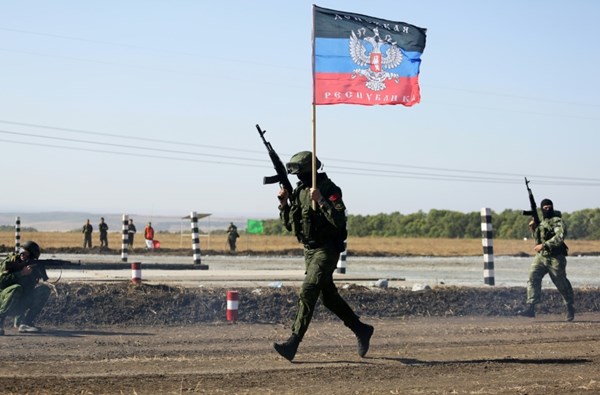Kyiv: Russia using Donbas as testing ground for modern weapons
The Donbas is now being used by the occupiers as a testing ground for testing the capabilities of Russia’s modern weapons and military equipment, said Lieutenant-General Oleksandr Syrsky, commander of Ukraine’s Joint Forces Operation, in an interview with Defense Express.
“The Russian military leadership is saturating the occupation contingent with modern weapons, intelligence and electronic warfare systems, communications equipment and other modern means to give them an advantage over the Joint Forces. At the same time, functional and technological research is being carried out on new prototypes of weapons under combat conditions. Currently the Donbas is being used by the occupiers as a testing ground for testing the capabilities of modern Russian weapons and military equipment,” Syrsky said.
According to the commander, the list of modern Russian weapons used by the enemy’s armed forces is long. However, the use of the latest military technology (especially radar, electronic warfare and anti-air systems) is restricted primarily to the Russian soldiers in the temporarily occupied Donetsk and Luhansk regions.
The divisions of the occupation forces have been observed using T-72BA (1999 model) and T-72BZ (2011) tanks; BTR-82A armored vehicles and a BTR-80s with a TKN-4GA trailer; a BMD-2 airborne infantry fighting vehicle; Rys, Tiger, GAZ 3937 Vodnik, Kamaz-4326 Vystrel and Mustang armored vehicles; 2B16 Nona-K artillery systems, Tornado MLRS, Pantsir S1 missile systems; Kasta-2E2 radar systems, the Barnowl-2 anti-air controls subsystem, Verba MANPADS, and many others.
The use of modern Russian-produced Krasnopol 152 mm artillery rounds has also been documented. The enemy was observed using a KM-8 Gran guided mortar in 2016. In addition, the enemy has been actively using anti-tank systems, especially the 9M111 and 9M113 rockets fired from “Fagot” launch systems.
The electronic warfare systems that Russia has brought into the Donbas merit special attention. The ones identified include the R-330 Zhitel, SPR-2M Rtut-BM, RB-34IV Leyer, and R-378B Borisoglebsk-2; 1L269 Krasukha-2 and SB-109A Bylina electronic warfare systems, and a “Repellent” station. The occupation forces’ aerial reconnaissance divisions have also made intensive use of Russian Orlan-10, Granat, Takhion, Eleron and Zastava drones. The effectiveness of the enemy’s electronic warfare has been rather high.
Periodically, Russian professional snipers enter the Joint Forces Operation zone, equipped with new rifles and new highly effective Russian-produced bullets. The enemy has also been trying to use modern counter-sniper warfare systems.
